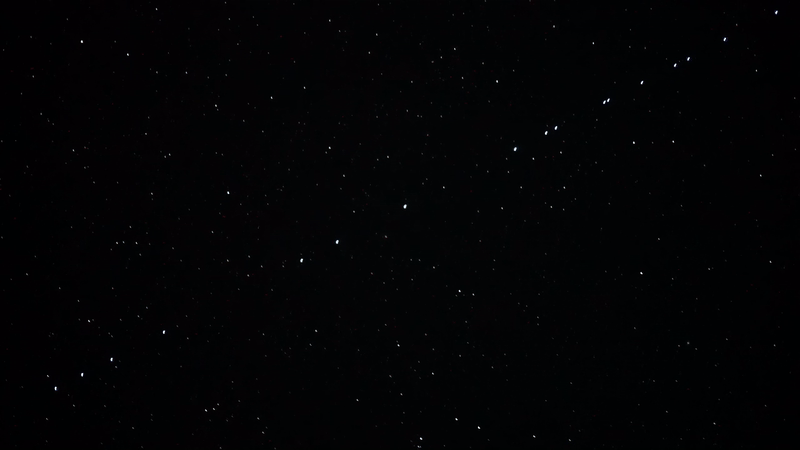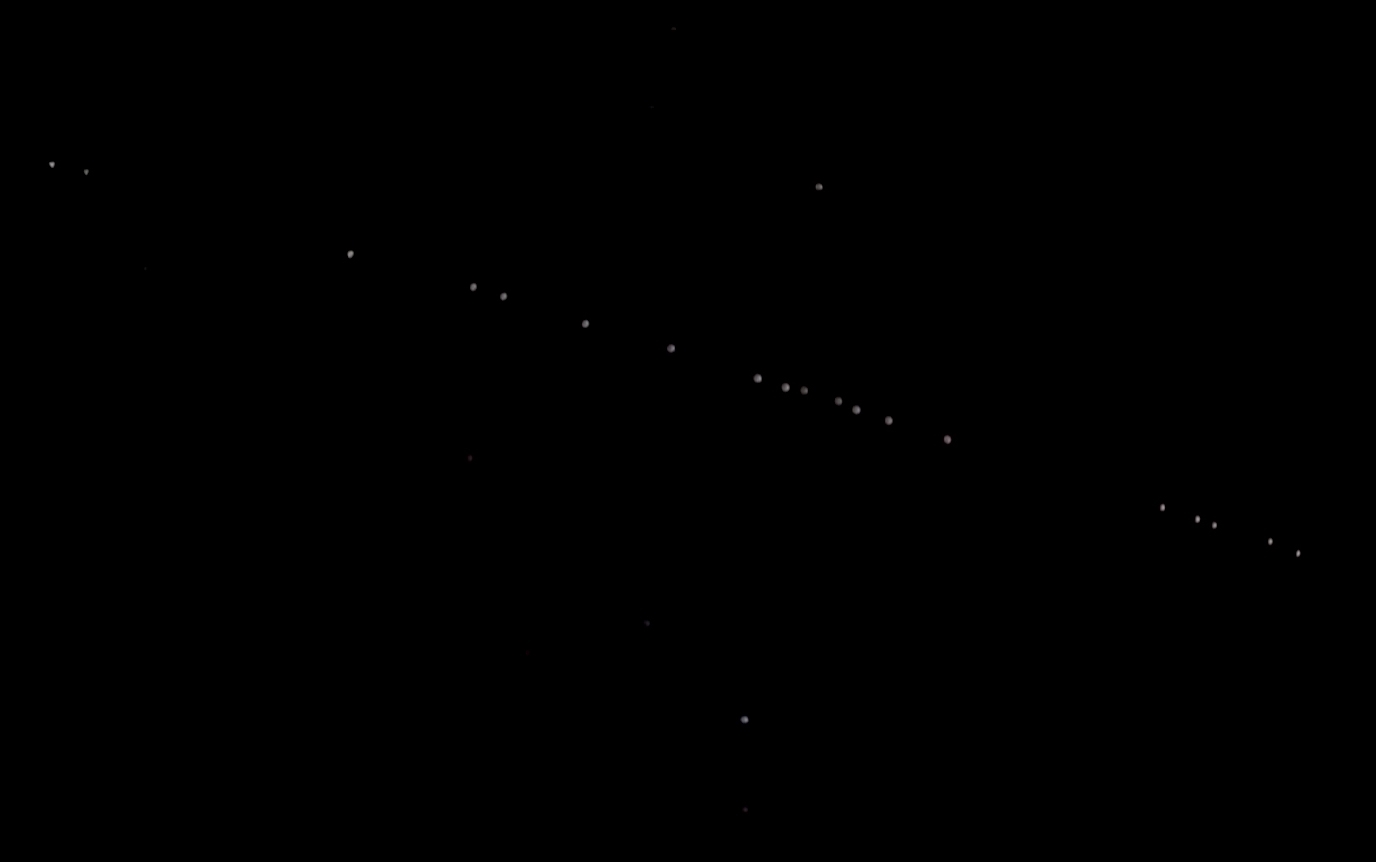Starlink satellite train: how to see and track it in the night sky
Starlink satellites are visible from Earth, you just need to know when and where to look.

Starlink satellite train: TL;DR
Starlink satellite trains are a fascinating sight in the night sky. When the satellites are first deployed, they appear as a close-knit group of lights in the sky, moving together in a straight line. In fact, Starlink satellite trains are often mistaken for UFOs because of their unusual appearance. Soon after deploying as a train, however, the satellites climb to their operational orbit 340 miles (550 kilometers) above Earth and spread out from one another.
The "Starlink satellite train" has become a captivating sight for skywatchers, offering a glimpse of the future of global internet coverage. This dazzling spectacle occurs shortly after SpaceX launches a new batch of its Starlink satellites — part of the megaconstellation that provides high-speed internet worldwide. On clear nights, you may spot these satellites as they streak across the sky, resembling a string of bright, evenly spaced lights.
While these satellites concern astronomers due to their impact on observations, they’ve captured the public's imagination. The Starlink satellite train is often mistaken for UFOs because of its otherworldly appearance. However, this striking formation is short-lived; as the satellites ascend to their operational orbit at 340 miles (550 kilometers), they disperse and blend into the starry backdrop. If you’re hoping to spot this celestial procession, timing is everything — so keep an eye on launch schedules and visibility forecasts.
As of Dec. 19, 2025, there are currently 9,357 Starlink satellites in orbit, of which 9,347 are working, according to Astronomer Jonathan McDowell, who tracks the constellation on his website.
The megaconstellation developed by the private spaceflight company SpaceX may grow to as many as 42,000 satellites in orbit, according to the science news website NASA Spaceflight.
Given the high numbers of regular Starlink launches (sometimes multiple times a week), there is ample opportunity to set your sights on catching a glimpse of the infamous "Starlink train".
However, it should be noted that Starlink satellites are not as visible nowadays compared to when they first started to be deployed back in 2019. This is due to efforts such as the Starlink VisorSat program which aims to darken the satellites so as to not interfere as much with astronomical observations.
Breaking space news, the latest updates on rocket launches, skywatching events and more!
Where and when to see the Starlink satellite train
The Starlink satellite train is best seen in the days immediately following a launch, when the satellites are still in their initial low-Earth orbit and closely grouped together. During this time, they often appear as a bright, fast-moving line of lights crossing the sky. These sightings are typically visible shortly after sunset or just before sunrise, when the satellites are illuminated by sunlight but the ground below is in darkness. Starlink satellites orbit Earth approximately every 90 minutes, so it's possible to see them multiple times in a single evening.
To find out when you can see a Starlink satellite near you, check out this Starlink locator website that details when and where to look for your next Starlink viewing opportunity.
If you want to see where all the Starlink satellites are located in real-time, this Starlink map shows the global coverage of each Starlink satellite as well as information on how many are currently in service, inactive or have burned up in Earth's atmosphere.
Our list of the best stargazing apps may help you with your Starlink satellite viewing planning as well as our photographing Starlink satellites guide.
Related: How to tell the difference between meteor and satellite streaks in photos
Why can we see Starlink satellites? Do they have lights?
We can see Starlink satellites only when they reflect sunlight; they do not possess lights of their own.
The vast and ever-increasing numbers of satellites from SpaceX and other private space companies, such as OneWeb, suggest that light pollution and other issues stemming from these megaconstellations may continue, and advocates have called for greater regulations from government agencies.
Related: Megaconstellations could destroy astronomy and there's no easy fix
How often can you see a Starlink satellite train?
The Starlink satellite train is usually visible shortly after the satellites have been deployed when they are at their lowest orbit.
Starlink satellites travel very fast and complete one orbit of Earth every 90 minutes which means you can sometimes see them within just two hours of a previous sighting.
Can you spot Starlinks when they deorbit?
If Starlink satellites fail to make orbit, they then return to Earth in dramatic fashion, burning up as they go. This happened on Feb. 4, 2022, when a freshly launched batch of Starlinks encountered the effects of a big geomagnetic storm. They were sent crashing back to Earth over the coming days and a remarkable video captured some of the space debris burning up over Puerto Rico on Feb. 7, 2022.
Additional resources
Read about how SpaceX's next generation of Starlink satellites (Starlink 2.0) have undergone a series of upgrades to reduce interference for the global astronomical community in this article published on the science communication site Interesting Engineering. Explore how light pollution hurts the night sky for astronomy with these resources from Florida Atlantic University's Department of Physics.
Who owns the night sky? This interesting article published on the International Dark-Sky Association's website takes a deeper look into the industrialization of space, the impacts of satellites and the cultural and biological heritage of the night sky.
Bibliography
How Starlink Works. Starlink. (n.d.). Retrieved April 18, 2023, from https://www.starlink.com/technology
Iemole, A. (2021, January 20). SpaceX launches First Starlink Mission of 2021. NASASpaceFlight.com. Retrieved April 18, 2023, from https://www.nasaspaceflight.com/2021/01/spacex-launch-first-starlink-mission-2021/
Jonathan's space pages. Jonathan's Space Report | Space Statistics. (n.d.). Retrieved April 18, 2023, from https://planet4589.org/space/con/star/stats.html
Live Starlink Satellite and coverage map. Starlink satellite tracker. (n.d.). Retrieved April 18, 2023, from https://satellitemap.space/?constellation=starlink
SpaceX Starlink Satellites Tracker. (n.d.). Retrieved April 18, 2023, from https://findstarlink.com/

Daisy Dobrijevic joined Space.com in February 2022 having previously worked for our sister publication All About Space magazine as a staff writer. Before joining us, Daisy completed an editorial internship with the BBC Sky at Night Magazine and worked at the National Space Centre in Leicester, U.K., where she enjoyed communicating space science to the public. In 2021, Daisy completed a PhD in plant physiology and also holds a Master's in Environmental Science, she is currently based in Nottingham, U.K. Daisy is passionate about all things space, with a penchant for solar activity and space weather. She has a strong interest in astrotourism and loves nothing more than a good northern lights chase!
You must confirm your public display name before commenting
Please logout and then login again, you will then be prompted to enter your display name.

